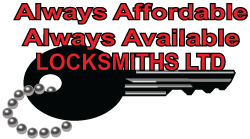
By Frank Fourchalk
When purchasing a safe it's important to determine whether you will be requiring full security or just fire protection.
Safes vary greatly in quality and price. Some aren't much more burglary resistant than a locked drawer. And many won't protect their contents against fire.
Manufacturer's claims that their safes are burglary resistant and fire resistant must be backed up by an independent rating agency. Safe manufacturers commonly seek independent evaluation from Underwriter's Laboratories (UL). This means that specific construction and testing guidelines must be met prior to labelling a safe as fire or burglary resistant.
Burglary resistant safes are generally constructed with thick steel and copper walls. Keep in mind that all steel is not the same. Some steels are much harder than others and can only be cut with carbide tools or torches.
It's a good idea to find out the UL rating before purchasing your burglar safe. Burglary safes listed by UL meet specific weight, material, lock and wall thickness guidelines. Ratings are also based on the amount of time and tools used by an expert to break into the safe. UL burglary ratings include: TL-15, TL-30, TRTL-30 and TRTL-60. The "TL" means the safe has withstood an attack by a safe expert using hand held tools commonly used by burglars. The "TR" means the safe has also been attacked with cutting torches. The number that follows the letters shows how many continuous minutes the safe withstood the attack. Burglary safes rated higher than TL-15 are used for commercial purposes. A TL-15 is usually a good choice for a small business or home use.
Fire Safes (not to be confused with burglary safes) are also referred to as "record safes". These safes are also UL listed. Fire safes with a UL rating meet guidelines based on endurance tests performed at temperatures of up to 2000 degrees fahrenheit. The final rating reflects the interior temperature reached and the time the safe's interior withstood excessive heat build-up. I can't stress enough that these are not tested for burglary resistance they are fire tested only. UL fire ratings include 350-1, 350-2, 150-1 and 150-2. A 350-1 rating means the temperature inside the safe won't exceed 350 F during the first hour of a typical house fire. A safe rated 350-2 offers protection for two hours. Safes with a 350 class rating are good for storing documents because paper chars at 405 F. Items that are damaged at lower temperatures such as computer disks, magnetic tape and phonograph records, require a safe with a 150-class temperature rating.
Combinations dials and key locks are the most common locking devices seen today, however, some safes have pushbutton mechanical or electronic locks that are easy to operate and provide quick access. Relocking devices offer special protection against a physical attack.
When purchasing a safe it's important to determine whether you will be requiring full security or just fire protection.
Safes vary greatly in quality and price. Some aren't much more burglary resistant than a locked drawer. And many won't protect their contents against fire.
Manufacturer's claims that their safes are burglary resistant and fire resistant must be backed up by an independent rating agency. Safe manufacturers commonly seek independent evaluation from Underwriter's Laboratories (UL). This means that specific construction and testing guidelines must be met prior to labelling a safe as fire or burglary resistant.
Burglary resistant safes are generally constructed with thick steel and copper walls. Keep in mind that all steel is not the same. Some steels are much harder than others and can only be cut with carbide tools or torches.
It's a good idea to find out the UL rating before purchasing your burglar safe. Burglary safes listed by UL meet specific weight, material, lock and wall thickness guidelines. Ratings are also based on the amount of time and tools used by an expert to break into the safe. UL burglary ratings include: TL-15, TL-30, TRTL-30 and TRTL-60. The "TL" means the safe has withstood an attack by a safe expert using hand held tools commonly used by burglars. The "TR" means the safe has also been attacked with cutting torches. The number that follows the letters shows how many continuous minutes the safe withstood the attack. Burglary safes rated higher than TL-15 are used for commercial purposes. A TL-15 is usually a good choice for a small business or home use.
Fire Safes (not to be confused with burglary safes) are also referred to as "record safes". These safes are also UL listed. Fire safes with a UL rating meet guidelines based on endurance tests performed at temperatures of up to 2000 degrees fahrenheit. The final rating reflects the interior temperature reached and the time the safe's interior withstood excessive heat build-up. I can't stress enough that these are not tested for burglary resistance they are fire tested only. UL fire ratings include 350-1, 350-2, 150-1 and 150-2. A 350-1 rating means the temperature inside the safe won't exceed 350 F during the first hour of a typical house fire. A safe rated 350-2 offers protection for two hours. Safes with a 350 class rating are good for storing documents because paper chars at 405 F. Items that are damaged at lower temperatures such as computer disks, magnetic tape and phonograph records, require a safe with a 150-class temperature rating.
Combinations dials and key locks are the most common locking devices seen today, however, some safes have pushbutton mechanical or electronic locks that are easy to operate and provide quick access. Relocking devices offer special protection against a physical attack.
